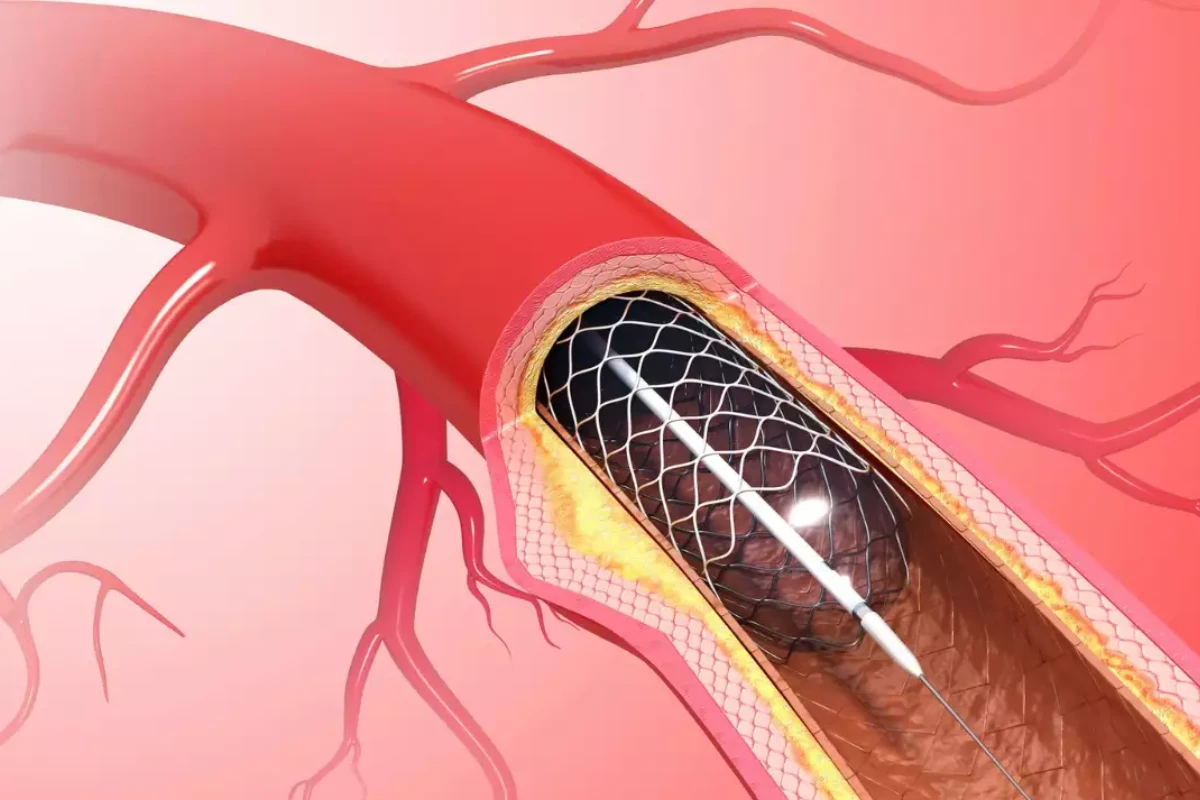What is Coronary Angioplasty?
Coronary angioplasty, also known as Percutaneous Transluminal Coronary Angioplasty (PTCA) or Percutaneous Coronary Intervention (PCI), is a minimally invasive procedure to open narrowed or blocked coronary arteries. These arteries supply blood to the heart muscle, and their blockage, caused by cholesterol plaques (atherosclerosis) or blood clots (coronary thrombosis), can result in chest pain or heart attacks.
During angioplasty, a tiny balloon catheter is inserted into the narrowed artery and inflated to widen it, improving blood flow. The procedure is typically combined with stent implantation to keep the artery open and reduce the risk of future narrowing. Drug-coated stents, which release medication to prevent plaque buildup, are widely used for better long-term outcomes.

When is Coronary Angioplasty Recommended?
Angioplasty is highly effective for certain conditions, including:
- During a heart attack, to restore blood flow and minimize damage within 60 minutes of hospital arrival.
- Persistent chest pain despite medication.
- Recent onset or worsening chest pain.
- Blockages identified during diagnostic tests.
However, it’s not suitable for everyone. In cases such as severe blockages of the left main coronary artery, multiple blockages, or weakened heart muscles, bypass surgery (CABG) is often preferred.
Benefits of Coronary Angioplasty
- Immediate Symptom Relief: Reduces chest pain and breathlessness caused by narrowed arteries.
- Life-Saving Procedure: Quickly restores blood flow during heart attacks, preserving heart muscle.
- Minimally Invasive: Shorter recovery time compared to bypass surgery.
The Angioplasty Procedure
The procedure is conducted in a cardiac catheterization lab using advanced imaging equipment. After local anesthesia is administered, a catheter is inserted through the wrist or groin and guided to the heart. A contrast dye helps visualize blockages, and a balloon catheter is used to widen the artery. A stent is then implanted to provide long-term support.
The process typically takes 60–90 minutes and is generally painless. Patients are closely monitored post-procedure and usually discharged within a day.
Risks and Complications
Although angioplasty is safe, some risks include:
- Re-narrowing (Restenosis): Occurs in less than 5% of cases with drug-coated stents.
- Blood Clots: Rare, but adherence to antiplatelet medication significantly reduces this risk.
- Bleeding or Bruising: Common at the catheter insertion site but typically harmless.
- Rare Complications: Heart attack, kidney problems, or stroke during the procedure.
Aftercare and Lifestyle Modifications
Post-angioplasty, patients are advised to:
- Take prescribed medications like blood thinners to prevent clot formation.
- Stay hydrated to flush out contrast dye used during the procedure.
- Avoid strenuous activities for a day or two.
- Adopt a heart-healthy lifestyle, including quitting smoking, maintaining a balanced diet, regular exercise, and managing conditions like diabetes or high blood pressure.
Long-Term Success
With advanced techniques like intravascular ultrasound (IVUS) and Fractional Flow Reserve (FFR), angioplasty outcomes are more durable. Immediate success rates exceed 90–95%, and proper follow-up care ensures lasting benefits.
If you experience chest pain, breathlessness, or symptoms similar to those before the procedure, consult your cardiologist immediately.
